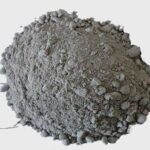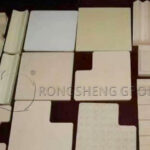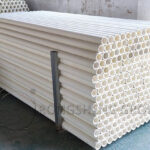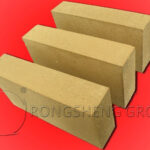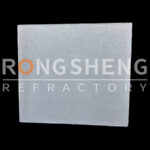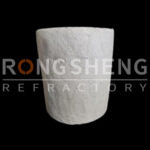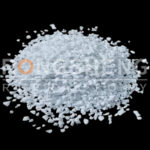Problems And Solutions Of Refractory Materials Used In Tundish
Refractory materials used in tundish including alumina zirconia precast block or corundum mullite castable for permanent layer, dry vibration material, nozzle brick and well block for working layer, slag blocking wall and continuous casting components refractory materials. Permanent layer don’t contact steel liquid directly, it’s main functions are thermal insulation and shell protection, usually alumina magnesia castable are used for permanent layer. Working layer should endure steel liquid fluxing, slag erosion and permeation, so magnesia dry vibration mix which has good slag corrosion resistance, convenient construction, easy disintegration are often used. Tundish nozzle is usually compounded by zirconia core and high alumina body, high alumina bricks play the role of well block. Slag blocking wall, used to resist steel liquid fluxing, slag erosion and permeation, are made by magnesia material. Continuous casting 3 main components are mainly made by aluminum carbon material, sometimes added with zirconia.
The common problems occurred in tundish refractory materials and their solutions are as follows.
- Reasons for dry vibration mix low strength:
① coal gas roaster has problem and causes partial low strength or no strength. ② dry vibration mix are humidified. Dry mix has 70% aggregate and 30% powder, power material has higher specific surface area and easy to become damp, meanwhile, it contains magnesia sand and bonder, which will be lose efficacy after hydration, so can’t produce bonding strength during roasting. ③ The bonder are not evenly mixed, some material has no or little bonder.
Solutions: Timely clean coal gas tunnel, change firing nozzle, promise the material dry and evenly mixed.
- Turbulator up lifting: turbulator belongs to slag blocking refractory material, usually produced by magnesia material. Turbulator side frame up lifting is due to magnesia material rupture under high temperature steel liquid and detached from strike plate. Integral up lifting is due to uneven bottom working layer, steel liquid immerses into the gap between working layer and turbulator.
Solutions: One method is to adjust turbulator components, control it’s high temperature expansion rate, the other is paving a layer of refractory powder between turbulator and working layer to promise there is no gap.
- Nozzle rupture and permeate steel: Tundish nozzle containing zirconia core is easy to rupture and lead to steel leak. The main reason is the zirconia core has poor thermal shock resistance.
Solutions: Zirconia core bulk density should not too high, or the thermal shock property will be lower. The nozzle body should also be larger to prevent steel liquid leakage.
- Ladle drivepipe rupture: Ladle drivepipe main function is avoiding steel liquid oxidation when poured into tundish, rupture is the main problem during production. One reason is that thermal shock resistance property is not good, the other is that during changing ladle, drivepipe adheres to ladle nozzle tightly and external force cause drivepipe rupture.
Solutions: Choose low thermal expansion and elasticity modulus material to produce dirvepipe to enhance thermal shock ability. When drivepipe can’t detach with nozzle, extra force can be exerted to make them separated.
